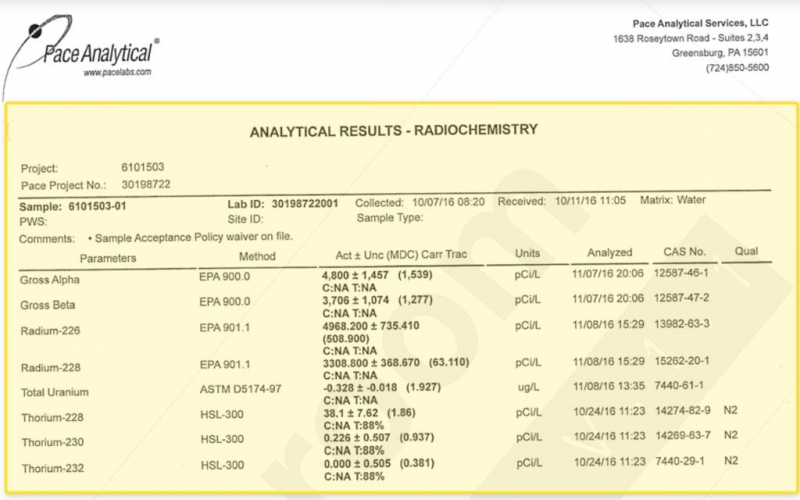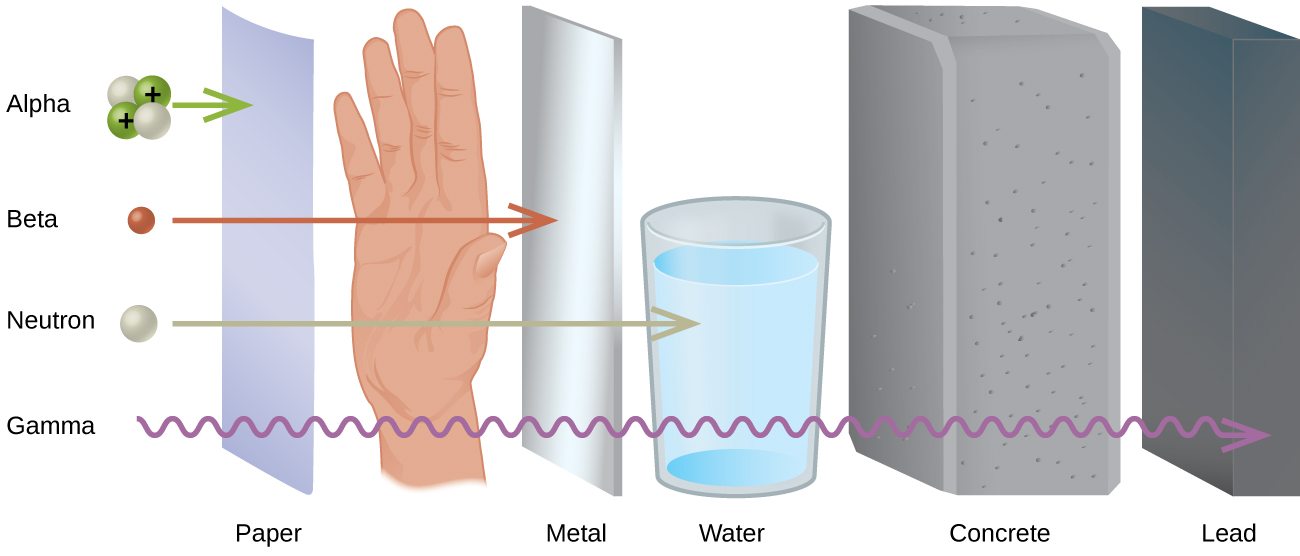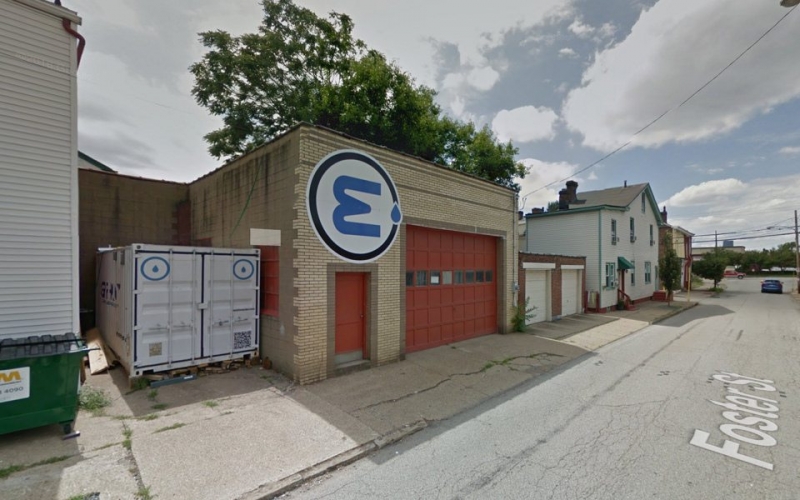Radioactive Wastewater, Treated by a Private Company, Discharged to a Public Works, Sent to a River
What if I told you there’s a company who says it can remove all those toxic parts of fracking wastewater and turn it into clean water to give it back to the river? Sounds good, right?
The fracking wastewater that comes back to the surface after hydraulic fracturing, a.k.a. “flowback” or “produced water” or “brine,” contains a host of toxic compounds, some naturally occurring and some man-made. But, it also has uranium, which turns into radium, and thorium, which makes the wastewater radioactive. It’s essentially, hazardous material.
So what’s the scoop?
“A fledgling company, Epiphany Water Solutions (Pittsburgh, Pa.), has obtained a lease to build a fracking wastewater treatment plant along the headwaters of the Allegheny River in Coudersport, Pa. Epiphany has proposed to install an untested distillation process, the first of its kind to be constructed, to take fracking wastewater — a.k.a. ‘flowback, produced water, or brine’ — and produce clean water. That clean water will then be sent to the wastewater treatment plant, who leased the property to Epiphany, and discharged back into the Allegheny River.” (From a Public Herald 2017 report)
The company submitted its application to the Pennsylvania Department of Environmental Protection and awaits final approval following a public meeting this week.
In the application, Epiphany uses a sample of fracking wastewater provided by a JKLM Energy operation in Potter County, and it’s loaded with radioactive material. Some results show detections 1,000 times greater than what’s safe for drinking water.
And what is a safe level of radioactive material in water? According to the National Science Foundation resource website:
“The safest amount of radiation to the human body is zero. It isn’t possible to be exposed to no ionizing radiation so the next best goal is to be exposed to as little as possible. The two best ways to minimize exposure is to limit time of exposure and to increase distance from the source.”
This facility is going to accept hundreds upon thousands, upon millions of gallons of wastewater with ionizing radiation, of Technically Enhanced Naturally Occurring Radioactive Material (TENORM), weekly. Each day, truck load after truck load will haul excessive amounts of cancer-causing radioactive material to the headwaters of the Allegheny River, a sentence that is hard to imagine is even possible to publish in 2018.
So, are the 42,000 gallons per day of distilled water being tested for TENORM before discharged? If so, is the water sample sitting for 21 days when tested for radium to ensure an accurate detection…if not, why not?
If trucks are being tested when they arrive at the facility by a device, is the device taking a sample of water? Because we’re talking about alpha, and beta materials here, which do not pass through metal. So, holding a device next to a metal truck is not going to tell you if it’s “hot.”
How is CAMA, the Publicly Owned Treatment Works (POTW), ensuring they’re not accepting radioactive material? Are they monitoring for Radium-226 and Radium-228 at this moment in their discharge…no, they are not. Do they plan to start daily monitoring for radioactive materials if the Epiphany wastewater plant is approved?
Has anyone taken a baseline for TENORM in the streambed sediment (upstream, at the discharge, and downstream) where the sewage effluent is located? If not, are there plans to ensure a baseline is performed and published to the public before the facility is permitted?
Epiphany Water Solutions is a young company, and last I read had only four team members. Their headquarters sits in a small garage on a residential street in Pittsburgh according to Google maps.
I can’t find another operation like the one proposed for Coudersport which has proven its success to produce 100% clean water. All operations accepting oil and gas waste that utilize a distillation process and produce discharge do so with the knowledge that contaminants, including radioactive compounds, can get discharged.
The plant operating in Tioga County by Aquatech International Inc. is no exception, and is being held to a higher standard by having to operate with a NPDES permit in the Chesapeake Bay Watershed.
Since Coudersport has been chosen to be the experiment for Epiphany’s prototype, why would it allow the liability of the NPDES permit to fall on CAMA (POTW), and not on Epiphany? If Epiphany is so confident in its ability to live up to the NPDES permit requirements, then let it discharge straight to the river, rather than play a shell game of sending it’s effluent to CAMA. Officials, with any sense of duty, should not risk a lawsuit by taking on the liability of Epiphany’s discharge.
To be clear about the propaganda, Epiphany is not producing 100% clean water — meaning it would be free of any material once distilled. Let’s stop pretending like this a gift of “pure” water to the river — and let’s not allow Trout Unlimited members to spread this propaganda without some measure of reality. This is not the same water that was first drawn from the river.
The company claims on its website that it can bring TDS levels of fracking wastewater at or below 100 parts per million (ppm) after treatment. However, 100ppm of discharge is still water containing contaminants. In that case, what is the city and sewage treatment plant doing to ensure the TDS leftover from Epiphany Water Solutions is not exceeding safe drinking water standards?
My guess is they’re leaving this up to the EPA and DEP to decide. In which case, another meeting will be held for the NPDES permit, at which time there’s a very strong chance that important compounds, such as TENORM, could be waived by the EPA, leaving the DEP to come with a plan that will likely monitor an insufficient gamut of the effluent.
And for what’s being vaporized by Epiphany Water Solutions — will they be venting fracking wastewater vapor at the site? According to their application the facility will produce air emissions from a boiler that will heat the water:
So, has the nearby school conducted a baseline of air quality for all of the air contaminants that can be emitted from the facility? If not, are there plans to perform a baseline? Has the school or borough contacted Carnegie Mellon or Cornell for assistance in setting up an air monitoring plan that map the likely pattern of pollution which will be emitted from the plant?
The questions created by this facility should cause any elected official to take a step back and look at what’s happening here from the viewpoint of human health. In that reflection, it would be easy for them to see that Epiphany is a company that’s never operated as a discharge facility; that opening the door to accepting radioactive waste to be treated and discharged into the Allegheny River will only find itself downstream, in a courtroom.
A public meeting about this facility is scheduled for 5:30 p.m., Tuesday, January 16th, at the Gunzburger Building in downtown Coudersport, Pa. where DEP will hear testimony from the public after a presentation by Epiphany and the state. All are invited to attend to have their voices heard.
Correction: the word “daily” was changed to “weekly” in the sentence: This facility is going to accept hundreds upon thousands, upon millions of gallons of wastewater with ionizing radiation, of Technically Enhanced Naturally Occurring Radioactive Material (TENORM), weekly.









Shut them down now ! Deep well dumping is the disaster presently happening .Now this ? I made evaporated water on a Navy ship. Salt water in on one tank with steam lines heating the salt water . The evaporated water was piped to another tank with cold water lines that turned it into evaporated distilled water . Not all of the salt water was evaporated and was discharges overboard . This toxic mess that is planned in Coudersport will destroy the river , aquatic life , people and animals that depend on it .